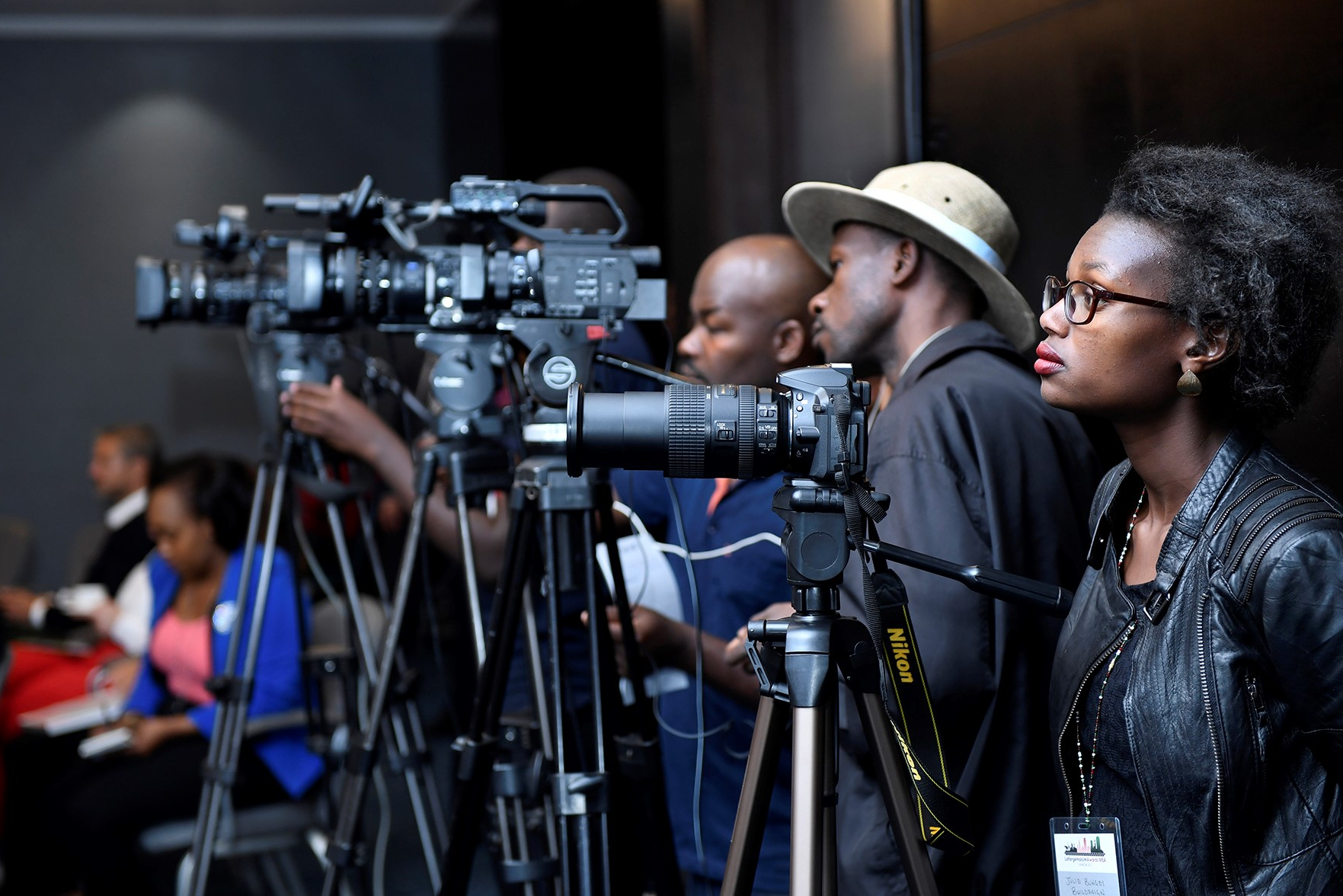The two leading media houses in Kenya – Nation Media Group (NMG) and Standard Group (SG) – have just published their half-year 2020 results and the numbers suggest an industry in deep trouble.
From a profit of KSh403M in the first of half 2019, NMG posted a loss of KSh375M over the same period in 2020 while SG moved from a marginal profit of KSh19M in the same period in 2019 to a loss of Ksh306M this year. One will struggle to find a time when NMG posted such a performance in recent times, if at all.
As expected, both firms attribute the negative performance to the adverse effects of the Covid-19 pandemic, which is partly true.
However, a deeper look at the top line performance – especially for NMG – suggests that the light at the end of the tunnel may have always been that of an oncoming train rather than torchlight.
A look at the performance of NMG over the last five years shows why.
Profit before tax has been on a downward trend, dropping by between 13% and 20% every year over the period. Last year profit dropped by 22% from 1.63B in 2018 to 1.29B. Suffice it to say that if this is happening at NMG, one of the best-run companies in the industry with solid governance structures, the rest of the firms in the industry must be neck deep in trouble.

Covid-19 pandemic is like the smouldering cigarette that was dropped in a forest and ignited a massive fire. To blame the cigarette for causing the fire would be to ignore one major fact; that there had to be conducive conditions in the forest that allowed the fire to spread. The existential crisis in the Kenyan media begun way before the pandemic and just like Covid-19 has been found to have deadly effects on those with underlying conditions, the local media were already sick before Rona.
It is also easy to argue that this is a global media challenge, not unique to Kenya. But every problem is local first before it becomes global, so we can’t depend on international solutions to fix local industry problems.
Innovate or die
The thing is, the local media industry has reached an inflection point, and players must innovate or die.
For this to happen, stakeholders must be very clear about what type of innovations to pursue and the expected outcomes as well as the payoff timelines.
For the longest time, media firms in Kenya have concentrated efforts on what has come to be known as linear or efficiency innovations. These are the innovations that focus on near term customer needs and whose main objective to optimize operations for peak efficiency and profitability.

An example is when organizations review internal operational processes to merge roles so that a journalist can produce content for TV, radio, print and online. This inevitably reduces operation costs, and may, at least in the short term, maintain or improve profitability.
See Also >> Radio presenter plays tricks to get a pay increase
Such initiatives are attractive to managers because their impact is easily calculable, risks are relatively low and the expertise and skills needed are readily available. They are however short term and unsustainable and the challenge of focusing mostly on such innovations is that you tend to focus on the current business needs while ignoring future imperatives. To take care of both the present and future, organizations need to be “ambidextrous”- they need to exploit the present core while at the same time exploring the future. In other words firms must also actively explore what is called nonlinear innovations.
Nonlinear innovations are about setting big, audacious bets about the future and backing them with small, stage-gate experiments to test inherent assumptions for validity. Because no one knows exactly what the future will look like, continuous experimentation and learning are key here. Such innovations require strategic foresight which is all about imagining possible future scenarios in a way that enables a firm to sense, shape and adapt to the new reality as it unfolds.
This is where the local industry has failed. Despite rapid changes and dynamism in the business environment, the industry has remained relatively static in how it operates for nearly 15 years. Is there any breakthrough or game-changing innovation that has come out of the industry over the last 10 years?
This is not to suggest that local media firms do not have the capacity or capability to develop strategic foresight, they do. Again, there are several reasons why this is happening.
Tweaking and twerking not enough
First is the possibility that the industry was fooled by the outcomes of the relentless tweaking and twerking of efficiency innovations like the occasional re-launch and revamp of product to freshen up and extend brand offering, retooling of processes to enhance efficiency as well as the ruthless cutting of costs especially through deployment of technology and jobs cuts.
Secondly the industry seems to have fallen for what is referred to as the ‘digital lipstick syndrome’ whereby a few online initiates like websites, streaming services and social media presence are deemed to be actual, full digital initiatives.
Thirdly, and I think more fundamentally, there has been a lack of courage to explore for the future. Lack of courage because while managers and investors know what should be done to prepare for an uncertain future, projects that do not show immediate financial promise are abandoned with abandon because payoff time frames are unrealistically short and risk tolerance and patience are on low supply.
Me-too industry culture
As a result we have a me-too industry that is looking inwards rather than outwards for growth. From a purely business point of view, I think three things must happen for media to survive, let alone thrive.
First, the human software that runs the organizations must be rebooted. There is too much homophily in the industry- organisations have developed corporate antibodies that reject anyone who doesn’t conform to the dominant logic of the industry. The industry is relying on expertise and models that led to past success which are, however, hopelessly inadequate for the present let alone the future.
The industry needs to bring in more mavericks and iconoclasts, people not enamoured of the success of the past. They need to be populating their ranks with employees with new in-demand skills like human centric design (HCD), multi platform UX designers, creative thinkers, data analysts, and coders, among others. Current employees and managers should be given an opportunity to up skill, unlearn and re-learn. Rather than just focus on demographic diversity (like gender, age, tribe, etc.) which is important, organizations should also pay attention to cognitive diversity i.e. hiring individuals with unique perspectives, insights, experiences and divergent viewpoints.
See Also >> TV queen shares the joys and gains in hopping from job to job
The firms also need to either incubate or make strategic acquisitions/partnerships with startups or small companies at the vanguard of exploring projects on new media consumptions trends and opportunities. Places like iHub, Nailab, Aga Khan University Innovation Center, among others, should be good places to start.
Secondly, media companies must redefine and expand the scope of what a media firm can or should do. The current structure of bundling of radio and TV broadcasting, print and online as the core of a media enterprise is clearly narrow and limiting given the competition that is currently being exerted by non-traditional media companies, especially tech firms like Safaricom.
Changing with the times
Firms keen on growth over time must evolve even if it means losing their old identity. Take the example of a company like Amazon, which was started just 26 years ago by Jeff Bezos as an online store for books and electronics. Amazon has since moved into the ad network business directly competing with Google. It is also an App store, directly competing with Google and Apple. Amazon is also in the content streaming business with a video on demand (VOD) service that competes with Hulu and Netflix as well as Amazon studio that produces video content.

Amazon Web Services (AWS) that provides on-demand cloud computing services on a metered pay-as-you-go basis is a direct competitor to IBM and Microsoft. Amazon defies the traditional definition of a company because it expands its scope around customers and not industry or competitors. The firm has learnt how to leveraged its core capabilities to serve new customers in new ways.
How can local media firms leverage on their core competencies to deliver value to new customers or deliver new value to current customers? I don’t claim to have the answers but I am sure those in company boardrooms already have ideas; they just need the courage to start experimenting and to have the staying power to do it for the long haul.
Read >> Walk from employment to entrepreneurship without hustling
In a bid to turn around its fortunes, NMG says it has “accelerated into digital media…” and “together with the strengthening of the Group’s print and broadcast products are expected to offset the adverse performance…and drive long term profitability of the business.”
I like the fact that the firm is talking about “long-term profitability” because turning around this situation is not going to be an overnight undertaking.
Digital media is currently in its embryonic, exploratory stage and no one knows what will pay off and what wont. There is much validation that is yet to happen and therefore this initiatives require time and space as well as “air cover”. The way to assess the success or otherwise of digital initiatives is not on how much money they bring in the short run but on how quickly the company is validating the business model and adapting accordingly. Some initiatives will definitely fail but if you are failing and learning and doing it again with the lessons in mind eventually there will be a breakthrough.
Which leads to my third and final point.
It is crucial that investors and all other stakeholders be prepared for short-term pain if they hope for long-term gain(s). Often, it is the pressure from shareholders/owners for quick results that pushes managers to solely focus on the near term at the expense of the long term. All they should do is to demand, monitor and measure how managers are optimizing existing business models while at the same time building new businesses for the future. The two require different performance measurement metrics.
[ This article was first published by the author on Linkedin ]













Leave a comment